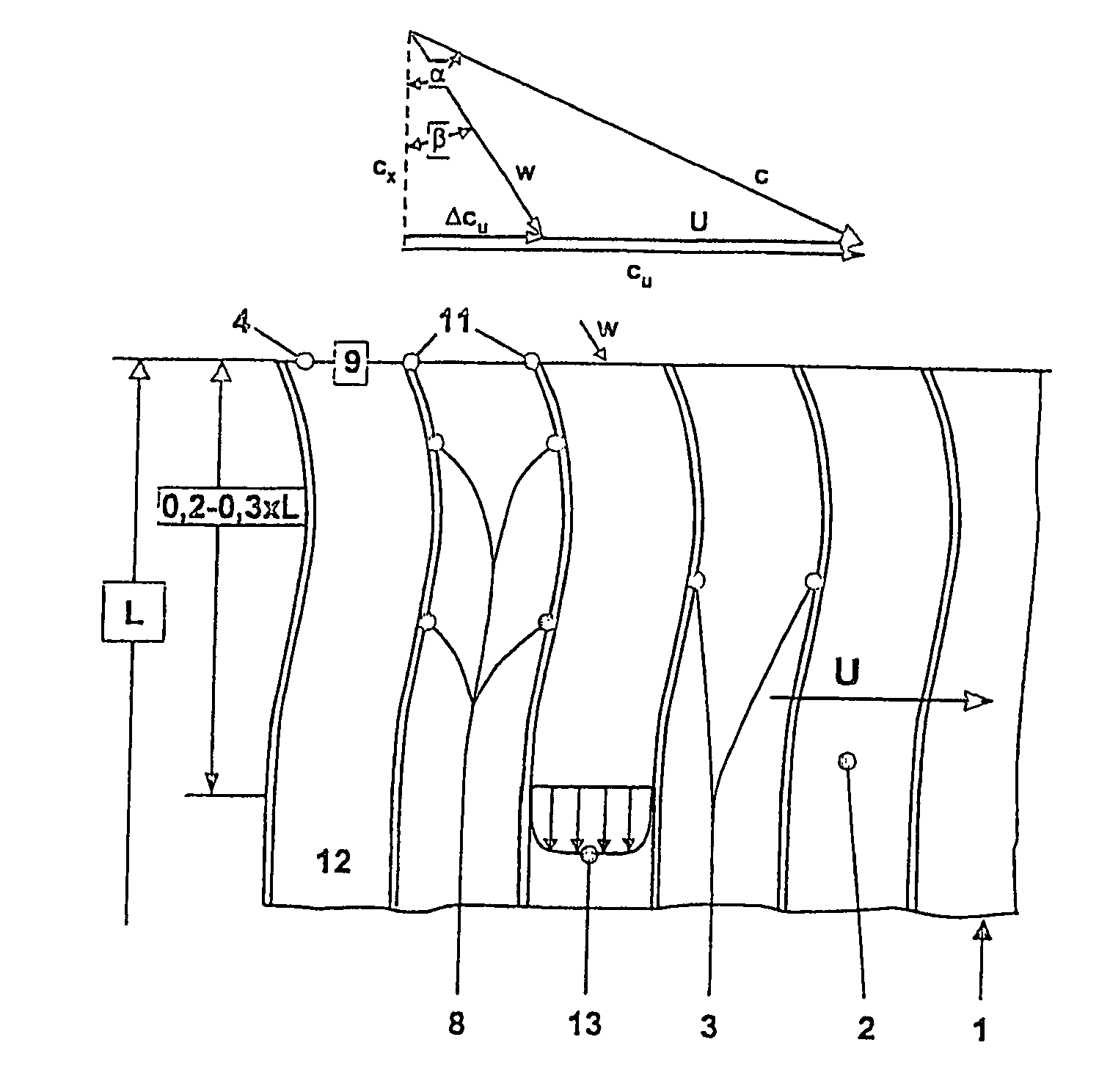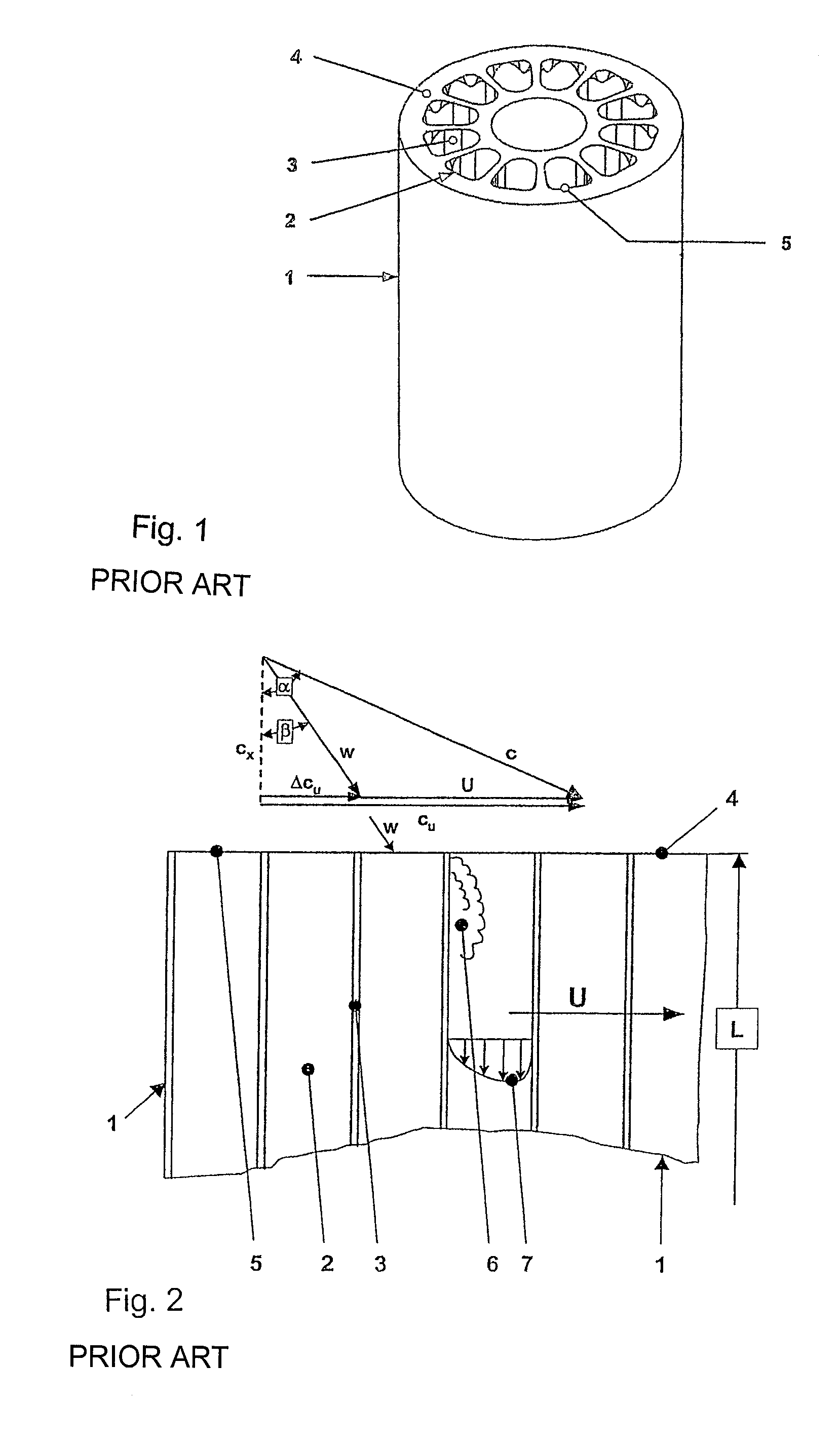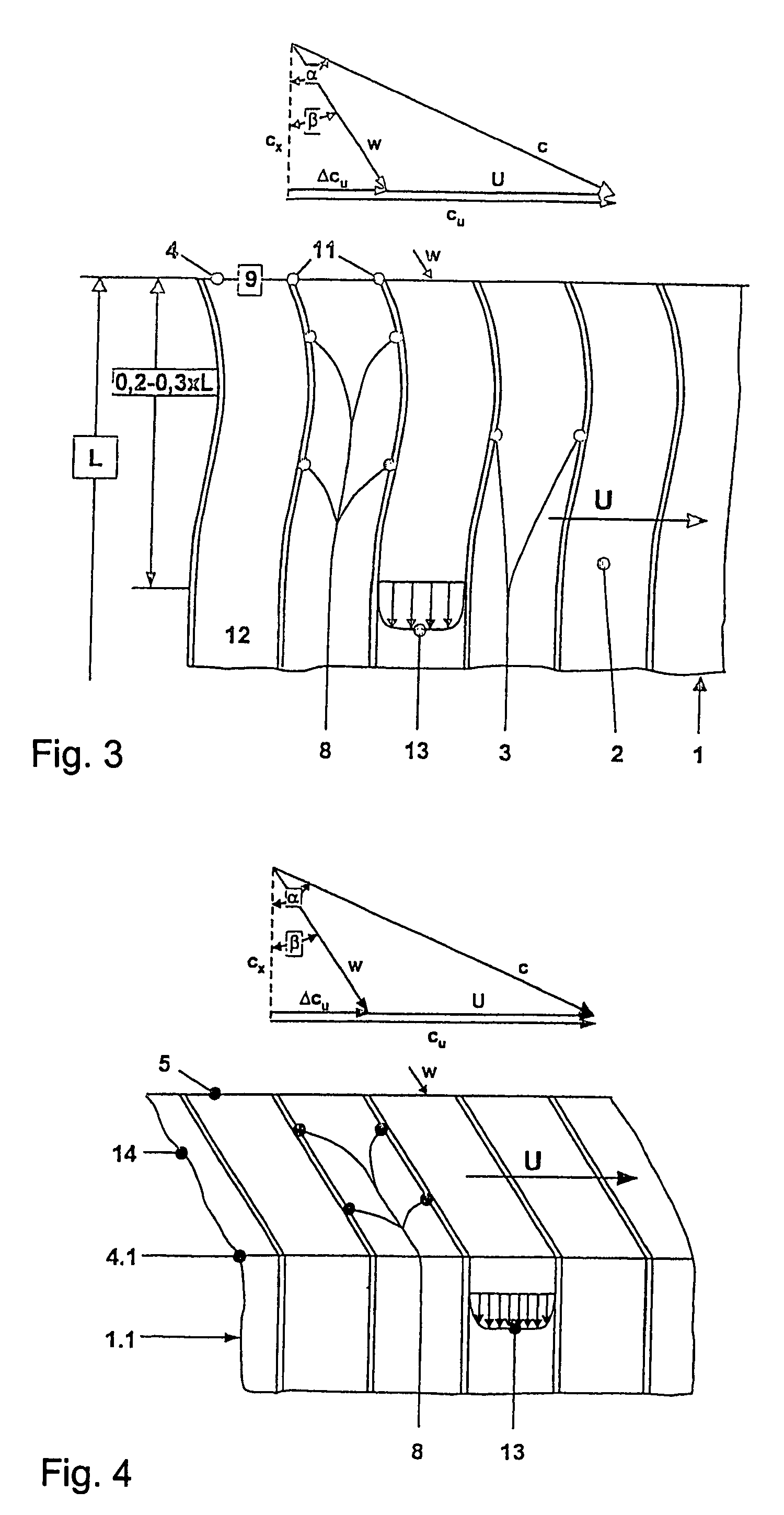Channel form for a rotating pressure exchanger
a pressure exchanger and channel technology, applied in the direction of fluid removal, piston pumps, positive displacement liquid engines, etc., can solve the problems of limiting the mixing range of two liquids, limiting the arrangement, sealing and design of the ball, and reducing the risk of mixing in the rotor channel. , the effect of reducing the mixing risk
- Summary
- Abstract
- Description
- Claims
- Application Information
AI Technical Summary
Benefits of technology
Problems solved by technology
Method used
Image
Examples
Embodiment Construction
[0022]FIG. 1 shows a perspective view of a prior art cylindrical rotor 1 according to U.S. Pat. No. 6,540,487. Rotor channels 2 having a trapezoidal cross section are arranged so they are axially parallel to and concentric with the axis of rotation of the rotor 1, with wall surfaces 3 designed as webs running radially between the rotor channels 2 extending between the rotor channels 2. The openings 5 in the rotor channels 2 arranged on the end face 4 of the rotor 1 have additional rounded surfaces on their radially outer corners in the manner of inclined surfaces that widen diagonally outward, so that each opening is slightly enlarged. There is no diagram here of a housing surrounding the rotor or its connections for the lines, nor are the flow guiding transitions from the housing to the rotor shown here.
[0023]FIG. 2 shows the developed view of the rotor 1 of the prior art pressure exchanger illustrated in FIG. 1. Opposite the openings of the rotor 1 with its axially parallel rotor ...
PUM
 Login to View More
Login to View More Abstract
Description
Claims
Application Information
 Login to View More
Login to View More - R&D
- Intellectual Property
- Life Sciences
- Materials
- Tech Scout
- Unparalleled Data Quality
- Higher Quality Content
- 60% Fewer Hallucinations
Browse by: Latest US Patents, China's latest patents, Technical Efficacy Thesaurus, Application Domain, Technology Topic, Popular Technical Reports.
© 2025 PatSnap. All rights reserved.Legal|Privacy policy|Modern Slavery Act Transparency Statement|Sitemap|About US| Contact US: help@patsnap.com



